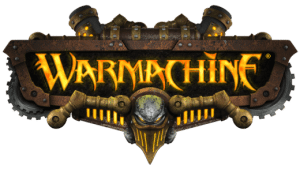For more great tactics articles, check out the Tactics Corner! This is the sixth article in a series of eight that will cover:
- Introduction to Warmachine and Hordes [link to I]
- Faction Descriptions – Warmachine [link to II]
- Faction Descriptions – Hordes [link to III]
- Steamroller and Tournament Scene [link to IV]
- The National Meta [link to V]
- VI. Melee and Range in Warmahordes
- List Design in Two-List Format
- Playing to NOT Lose
Melee and Range in Warmahordes
I wanted to write a melee and range based article because they are very different and important components to the game. Melee and range attacks are very well balanced, where some lists will skew melee and others range, but most lists provide a balanced approach. Additionally, the game is influenced by the Steamroller scenarios, which changes the way melee and range armies interact and how the game is won (lost). It is also important to note that neither melee nor range components to a list are static. Movement is always an option and often fundamental to execution. A common term used in Warmahordes is “threat range.” Your threat range is how far a model/unit can threat, either in melee on the charge or with a range attack. This is another concept that is fundamental to the melee and range game.
Melee
Melee is where the offensive power is in Warmahordes; melee weapons generally hit harder than ranged weapons and charging models gain an additional d6 (3d6 rather than 2d6) of damage on the charge. Getting into melee in your favor and winning the exchange, well that’s a lot of what this game is about.
Playing the melee component of your list is all about how you approach your opponent. If they have the superior range force, then you need to carefully consider how you can deliver your melee force and with enough of it left intact to be effective. If its melee against melee then it becomes all about how your armies approach each other; positioning is key.
There are many different components that become important in a melee scrum. Sometimes a good melee fight feels like playing for card advantage in magic; you want to make sure you are in control of the board, but don’t put too many resources forward, such that your opponent can take advantage and then you lose board control.
Range
Range attacks can often dominate any tabletop game. Warmahordes has done a fantastic job of not letting this happen. The threat range on a range attack is farther than that of melee, but no disproportionately so. Range attacks don’t generally hit as hard as melee attacks, but they can still be strong. Dedicated range units are likely to die once engaged by a melee unit, but they have a fighting chance.
Range attacks in mass can be a very powerful tool, there are some instances where a range list can just shoot down a melee list before engaging. The range list will generally need to play very close to a board edge to enable this, which means the army is giving up valuable table space which may lead to a scenario loss. Many range lists will have one or two pieces that act as an anchor that can hold some table space while the guns do their work.
A major advantage to having a strong range game comes in the ability to assassinate your opponent’s caster. Given the large threat range, a number of range attacks can really threaten a caster and force your opponent to play very defensively. Even if your range attacks don’t kill the opponent’s casters, the fact that they are out of the game hiding can provide your army a big benefit.

